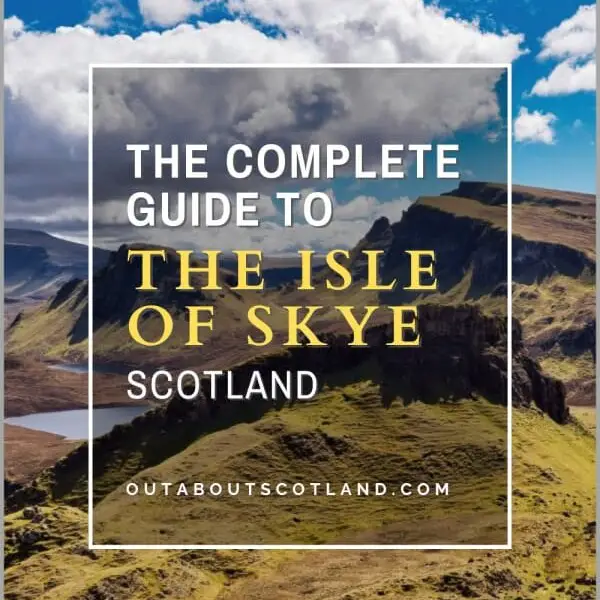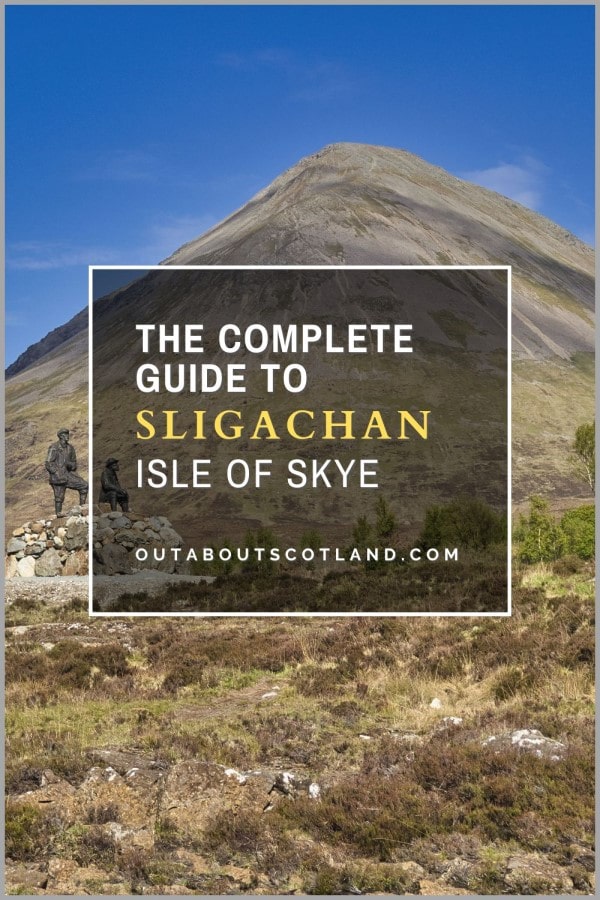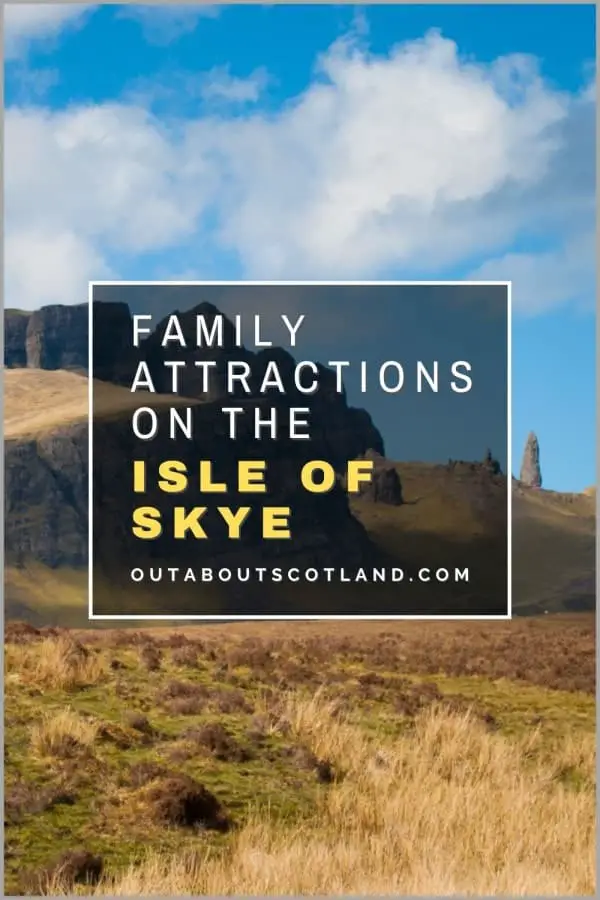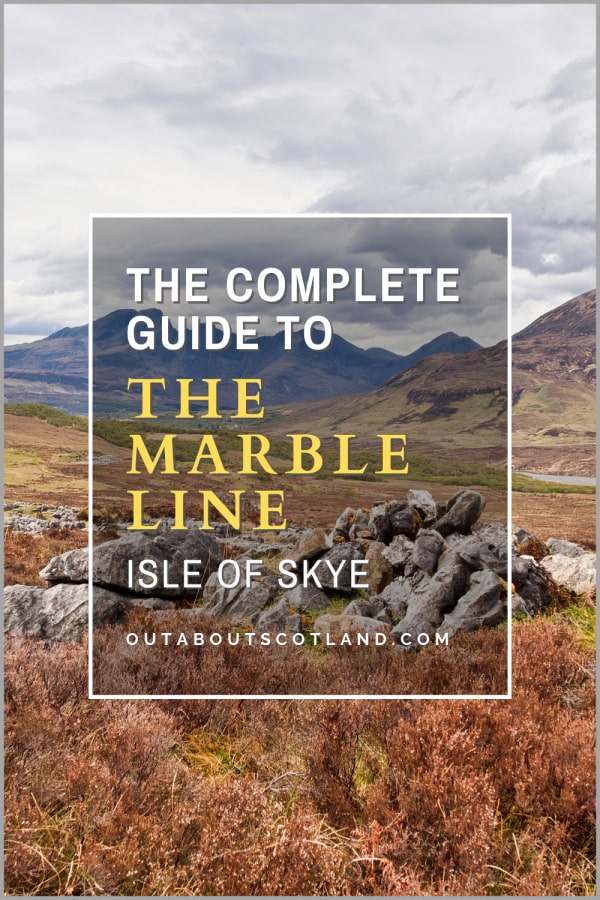The Isle of Skye is one of Scotland’s most popular tourist destinations, attracting over 600,000 sightseers annually. People travel from all over the world to explore this west-coast island’s beautiful landscapes, and attractions like the Storr, the Fairy Pools, and the Quiraing are essential places to visit for anyone touring Scotland.
Discover this hauntingly beautiful island with this complete guide which features an overview and lots of handy visiting tips.
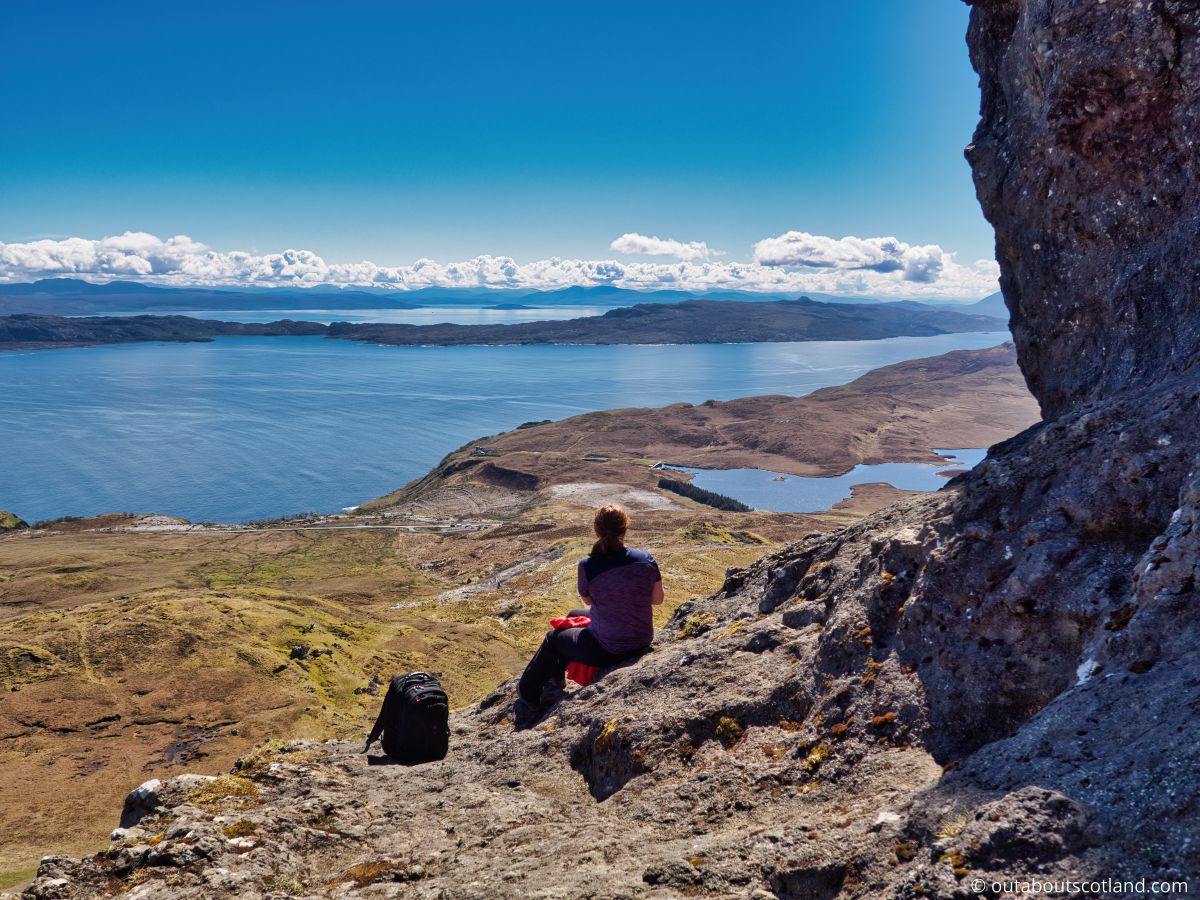
Overview
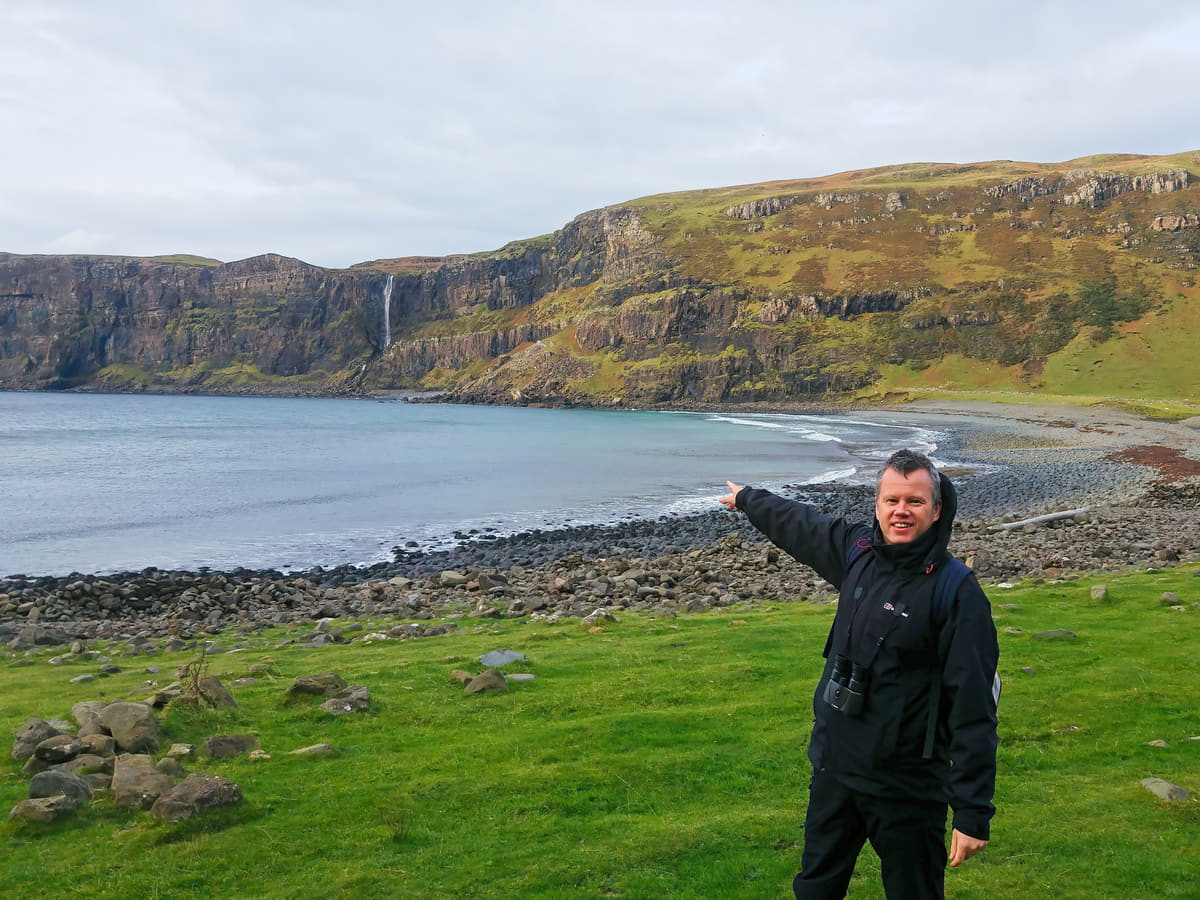
The Isle of Skye, the largest island in the Inner Hebrides, is renowned for its rugged landscapes, picturesque villages, and wild coastline. Its breathtaking scenery includes the dramatic Old Man of Storr, the towering Cuillin mountain range, and the mystical Fairy Pools, making it a paradise for sightseers, nature lovers, and photographers.
The Isle of Skye is situated in the Inner Hebrides on the west coast of Scotland, 8 miles north of the Small Isles and immediately west of the Applecross peninsula on the mainland (see the map further down this page). It’s a big island at 639 square miles, yet it has a permanent resident population of just 10,000 people, so it must be an exceptionally quiet place, right?
Sadly, no, it’s not, and the truth is that Skye is one of Scotland’s most popular tourist destinations that receives well in excess of half a million visitors annually – a number that soared to nearly 650,000 just before Covid-19 devastated the travel industry.
So why should anyone visit it? The answer lies in its stunning landscapes, pretty villages, superb coastlines, dramatic mountains, and incredible wildlife, all of which are easily accessible and offer 90% of the best experiences you can have in Scotland without having to drive hundreds of miles to see them all.
Access to Skye is easier than most of Scotland’s islands due to the fact it has two entry points: the first at Kyleakin, where the mainland is reached via the Skye Bridge, and the second at Armadale, where Calmac ferries regularly run to and from Mallaig on the mainland.
From either point visitors can drive along (mostly) well-maintained roads to explore the island from the north to the south thanks to the A87 which is almost entirely double-track – something that’s unheard of on many Scottish islands.
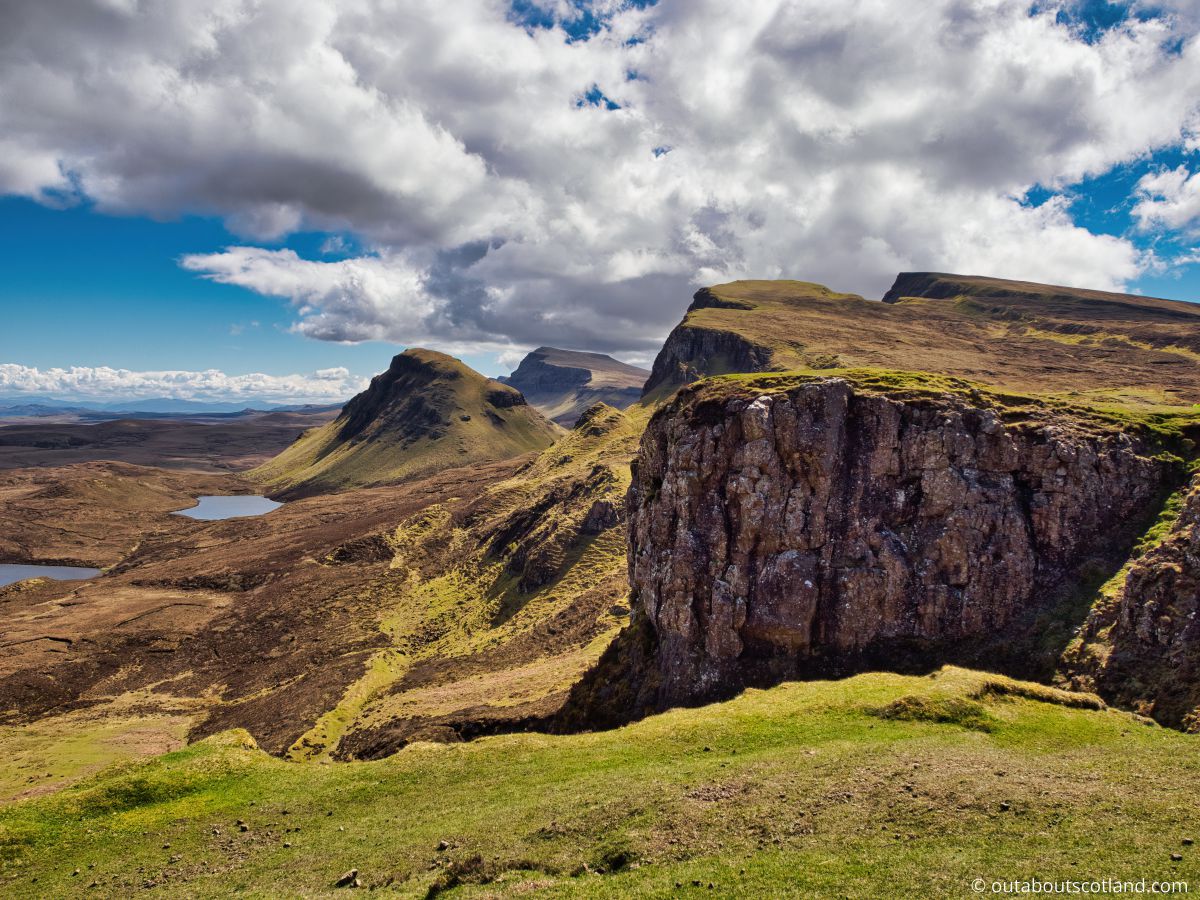
That’s just as well, as a car is a necessity for visiting Skye unless you join a bus tour. The island is 48 miles long and 22 miles wide at its extremities and while there are roads around some of it, the majority has no vehicular access at all.
As far as accommodation is concerned, be aware you will have to book at least 3 months in advance in order to secure a room, and preferably 6 months before the date of travel in order to avoid seasonal price hikes. There are lots of sleepy little settlements on Skye, including Portree, Dunvegan, Edinbane, Uig, and Staffin in the north of the island, and Broadford, Armadale, Carbost, Elgol, and Kyleakin in the south.
I’ve personally stayed at Broadford and Portree and highly recommend them both as bases to explore the island. Alternatively, there are lots of campsites, lodges, and even a few glamping pods to choose from, so bookmark the isleofskye.com website as it has updated lists of places to camp as well as B&Bs, hotels, and self-catering units.
For a luxury break on Skye, I highly recommend The Three Chimneys at Colbost, which has absolutely beautiful rooms and serves mouth-watering food. Expensive, but worth every penny.

The Highlights
1: The Quiraing. This breathtaking region of Trotternish is hauntingly beautiful and simply has to be included in a visit to Skye. The views along the entire route are incredible, so make sure you pack a camera as there will be countless moments you’ll never want to forget.
2: The Fairy Pools. Yes, they’ve become a crowded tourist hotspot, but get there early morning or during the off-season on a sunny day and you’re in for a treat. The turquoise of the crystal-clear pools and the dramatic Cuillin mountains on the horizon is one of – if not the – prettiest scenes in Scotland.
3: The Fairy Glen. This is another unbelievable landscape and it’s quite unlike anywhere else in the country. Although the glen is becoming increasingly popular it’s still possible to go there out of season and have the place almost to yourself. Combine a trip to the Fairy Glen with the Quiraing for two memorable experiences you can enjoy in one day.
Visiting Tips
1: You might be tempted to explore Skye’s mountainous regions (the Red and Black Cuillins), but unless you’re a seasoned hillwalker, I suggest giving them a miss as they’re very challenging (to say the least).
The average weekend tripper looking to explore the wilds of Skye might be best off heading to Sligachan and walking the route to the Fairy Pools instead. This 3.5-mile footpath presents lovely views of the mountains and allows visitors to experience the real off-grid side of the island.
2: Following on from the above, if you’re going to camp or walk around Skye make sure you pack plenty of Smidge as the little blighters will make your life a misery otherwise. For the full low-down on Scotland’s infamous biting insects, read How to Avoid Midges in Scotland.
3: Visiting the Isle of Skye is #1 on the itinerary of many tourists, and with only 10,000 permanent residents and over 600,000 incoming visitors, it’s no surprise accommodation books up early each year.
That leads to many visitors choosing to wild camp, but there are a few points to note before unpacking the tent: use a stove rather than an open fire; use public toilets whenever possible; remove all litter before leaving; and do not discard any waste in rivers or lochs.
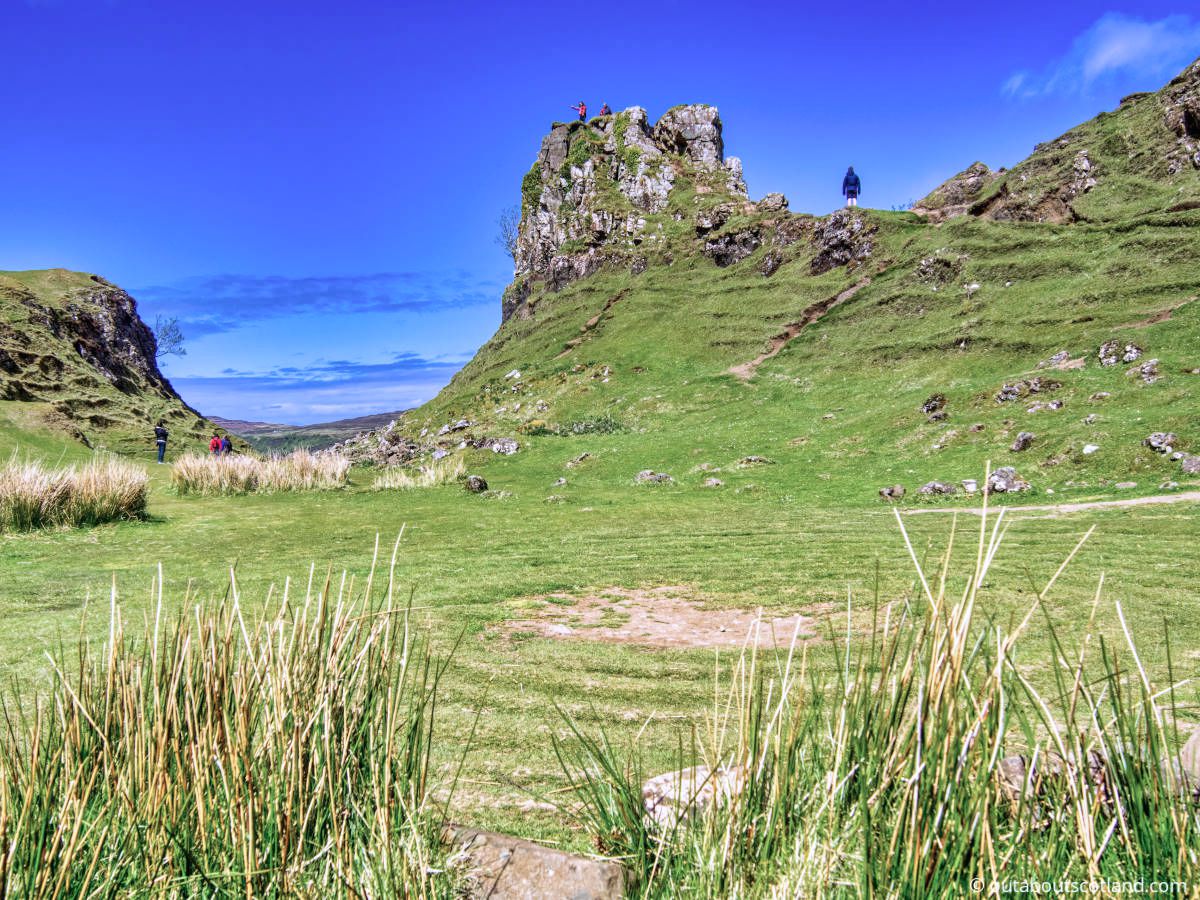
Tourist Information
Starting from the south of the island, visitors can drive over the Skye Bridge from the mainland to Kyleakin and then head into the Sleat peninsula which tends to see fewer tourists than the rest of the island. Even so, it has a very pretty coastline, wild moorland in the centre, and the superb Armadale Castle on the southern edge.
The next stop heading north is the village of Broadford which is a great place to stock up on supplies before visiting another less-visited region of the island at the Boreraig clearance village and the old Marble Line.
Heading further into the island, the terrain changes to the towering peaks of the Red and Black Cuillins – two mountain ranges that offer some of the most challenging hiking routes in Scotland. The Black Cuillin in particular is breathtakingly beautiful, but it has peaks like the “Inaccessible Pinnacle” that require rock climbing and then abseiling back down.
The Red Cuillin to the east is much easier to climb, but it’s still hard work due to the amount of loose granite scree towards the summits.
Beyond the Cuillin’s lies the first of the ‘big’ tourist attractions on Skye, starting at Sligachan with its famous bridge and continuing along narrow footpaths across heather-covered moorland to the Fairy Pools. The Fairy Pools are a series of waterfalls and pools of water that flow off the River Brittle at the foot of the Cuillin Mountains, and they’re famous for the mesmerising blue and green colours that reflect off the underlying bedrock.
The pools are beautiful but insanely busy, so instead you might like to head north to the Talisker Distillery which offers visitors the chance to see how Scotland’s favourite spirit is made, while to the east there’s the village of Sconser where tourists can hop on a ferry to the Isle of Raasay.
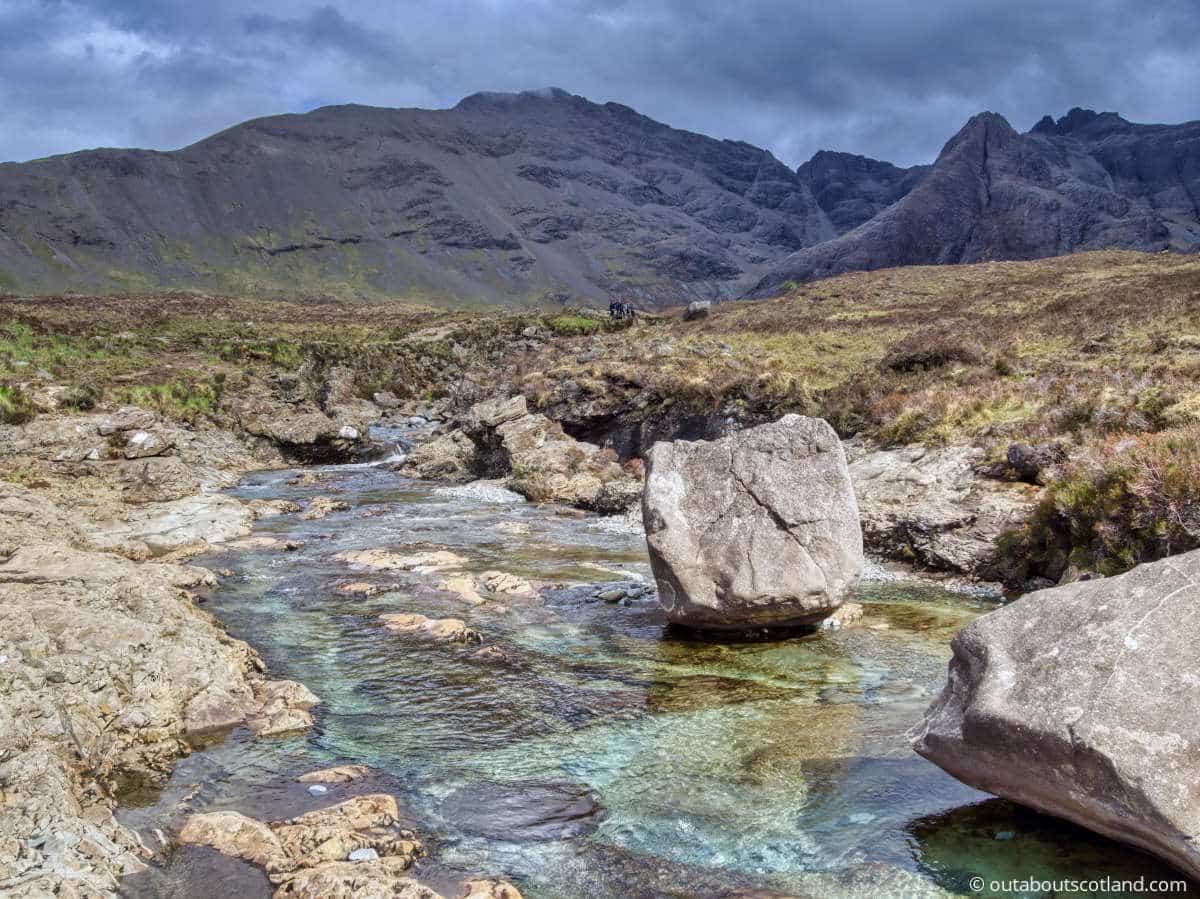
That’s a brief overview of South Skye, so now let’s move to the northern half. Between Sligachan and Trotternish, the main attractions on the eastern side of the island have to be the fishing village of Portree and the Storr, which lies a few miles further north.
Portree is Skye’s largest settlement, although ‘large’ needs to be taken into context here as it only has around 2,500 residents. What makes it worth visiting is its gift shops, mini-supermarket (one of the few on the island), and its harbour which offers boat trips out to see Skye’s marine wildlife including white-tailed sea eagles, whales, dolphins, and basking sharks.
Keeping to the coastline past Portree takes visitors to the enigmatic Old Man of Storr which is a towering rock outcrop on a landform created by an enormous ancient landslide.
Due to its location near Portree and its ease of access from the road, the ‘Old Man’ is one of Skye’s top attractions, and while it might be heaving with crowds it’s undeniable that the views at the top of the Storr are nothing short of jaw-dropping.
Continuing along the A855 takes visitors into what I personally believe is the most spectacular region of Skye. There are almost too many highlights to list in this post, so instead I’ll just mention the ones that I reckon are the ‘must-dos’ for first-time sightseers.
First up is the Lealt Falls viewpoint where you can see a tumbling waterfall that absolutely thunders after a rainfall. It’s very pretty, but as a top tip, follow the path to the cliff edge as the view is even nicer from that vantage point.
Next comes Brother’s Point, which is a steep promontory that juts out into the sea for 1/3 mile. That might not sound particularly exciting, but this stretch of coastline is exceptionally scenic and is a good place to hide from the crowds of the Storr and the Quiraing.
Following Brother’s Point, the next attraction is the Kilt Rock waterfall, which is famous because the cliffs behind it look like—you guessed it—a kilt. To be honest, you won’t spend much more than 30 minutes at the viewpoint, as there’s not much else there, but when the water is in full flow, it’s quite a sight and definitely worth taking a few photos of.
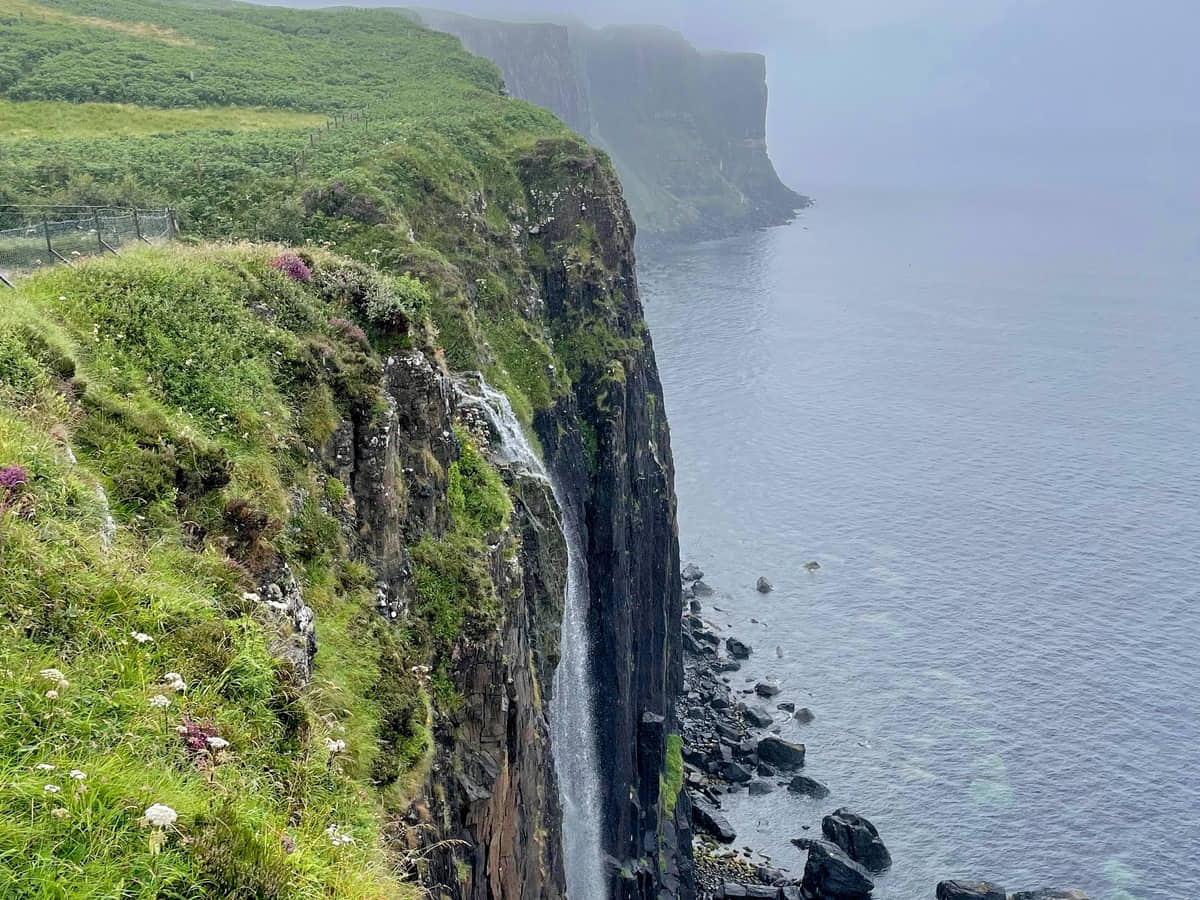
The coastline past Kilt Rock is famous for its dinosaur finds but the best place to see them is An Corran beach which is signposted from the road. The beach is shingle and isn’t much to write home about but it does have 19 perfectly preserved dinosaur footprints to keep an eye open for – as long as the tide’s out.
Alternatively, check out the Staffin Dinosaur Museum (address: Ellishadder, Staffin, IV51 9JE) which is a lovely wee museum with lots of dinosaur fossils. From An Corran, the next site on the agenda is my personal favourite, Quiraing.
Like the Storr, the Quiraing is another ancient landslide, only this one is much larger and even more dramatic. The landscape in this part of Skye has been carved into otherworldly shapes that look quite surreal, and the views along the footpath that cuts through it offer views that rival anywhere else in Scotland.
Walking through this part of the Trotternish Ridge is a challenging hike but very rewarding and in my opinion is the highlight of the entire island. Just be aware the path is narrow, steep in places, and very slippery in wet weather, so decent waterproof hiking boots are a must.
Following the A855 past the northern tip of the Trotternish peninsula will take you to the village of Uig where you can then take a signposted road to the Fairy Glen. Like the Quiraing, the Fairy Glen is the remnant of pre-history landslides, but at this location they’re concentrated in one small area where the landforms have been weather-beaten into a series of bizarre conical hills.
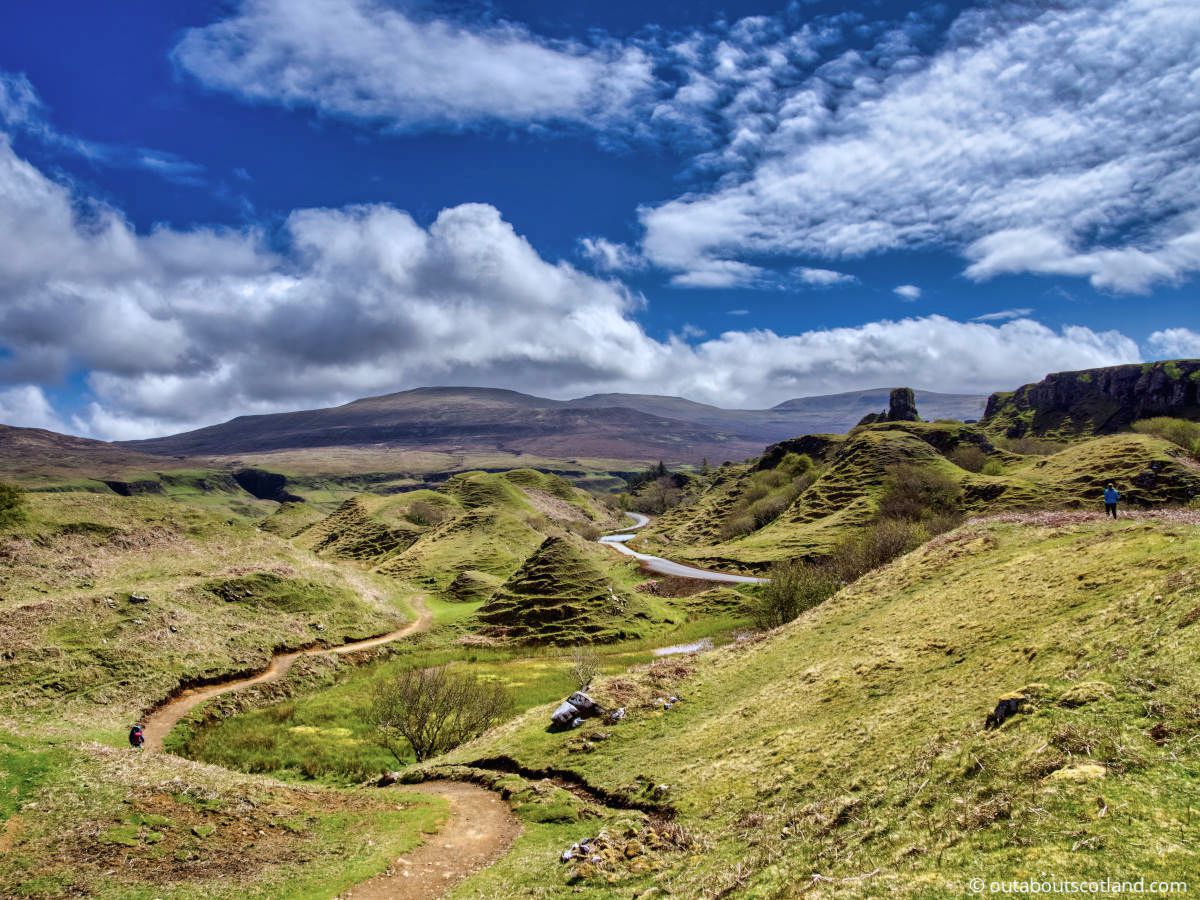
I don’t want to keep using superlatives but you kind of have to when describing Skye’s attractions, so I’ll just say the Fairy Glen is easily up there with the Quiraing when it comes to amazing places to visit on the island. As much as I’d like to include all the attractions in the remaining northwest of Skye, I have to admit I’ve only managed to visit a couple of locations, which are Dunvegan Castle and Neist Point.
Dunvegan Castle overlooks Loch Dunvegan, where it was built 800 years ago as the home of Clan MacLeod, and it is, in fact, the oldest continuously inhabited castle in Scotland. The interior of the castle is open for guided tours, but it also has lovely gardens to walk around, a fantastically good café, and boat trips to see the loveable Loch Dunvegan seal colony.
Continuing west will eventually take you to Neist Point and its lighthouse which is perched on a rocky clifftop. This is the most westerly point on the island and it’s a favourite with walkers thanks to the dramatic sheer-sided cliffs that tower above the crashing waves below.
The return walk to Neist Point lighthouse only takes around an hour, but if you’re a wildlife lover, you’ll want to spend much longer, as the waters offshore are a good place to spot minke whales and basking sharks. There are also lots of dolphins around this part of Skye, and if you’re very lucky, you might even catch sight of an orca or two.
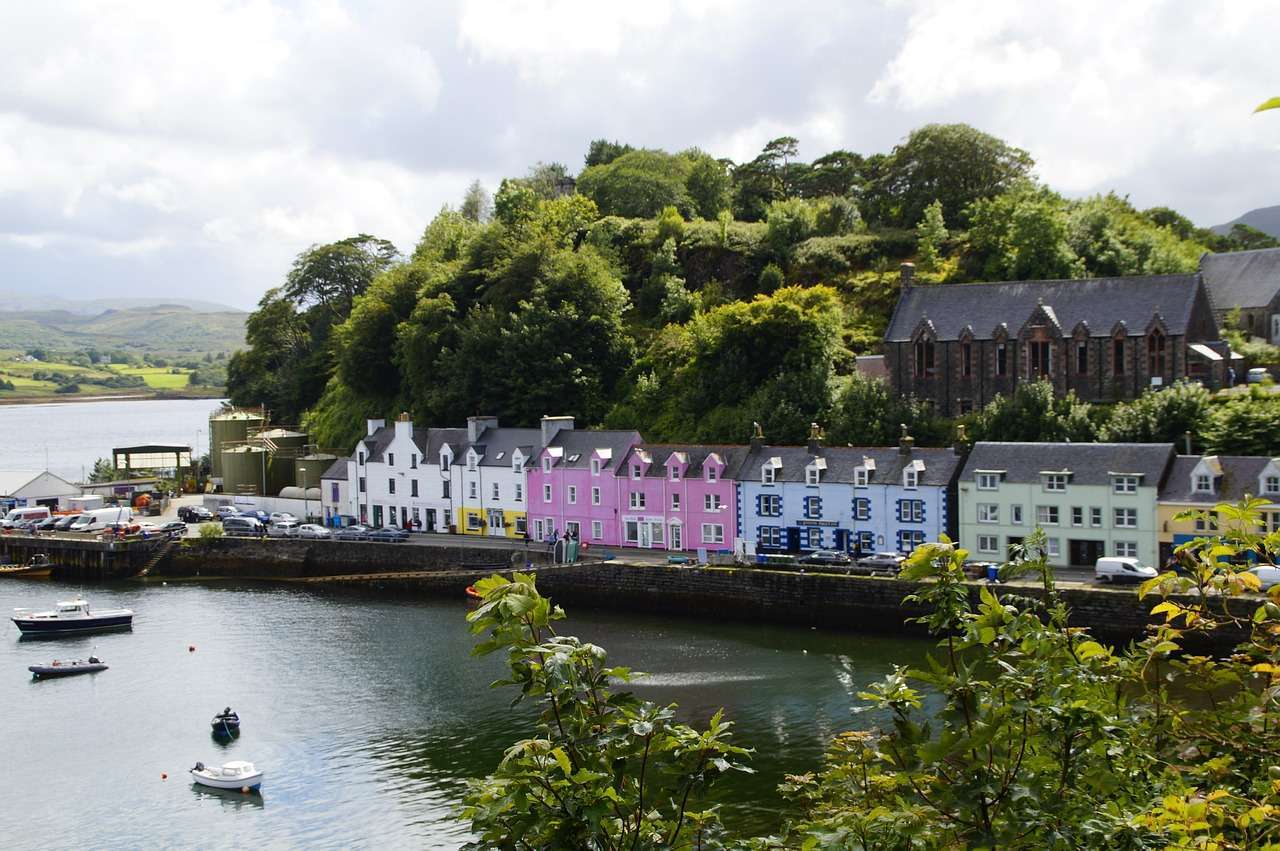
How to Get to the Isle of Skye
There are several ways to get to the Isle of Skye:
- By car. If you’re driving from the mainland you can take the A87 which leads to the Skye Bridge at Kyle of Lochalsh. The bridge connects Skye to the mainland and is the main route onto the island.
- By bus. There are several bus companies such as Citylink that operate services to the island from various locations on the mainland. Glasgow or Edinburgh to the Isle of Skye takes around 5 hours.
- By train. The nearest train station to Skye is in Kyle of Lochalsh. From Kyle of Lochalsh, you can catch a train to Edinburgh or Glasgow which takes around 7 hours.
- By ferry. The nearest ferry terminal is located in Mallaig which has sailings to Armadale on Skye. See the Calmac website for details.
Things to Do
Visit the Old Man of Storr: This iconic rock formation on the Trotternish peninsula offers a superb hike. It is a must-see location for both nature enthusiasts and photographers because of the breathtaking views of the sea and island that surround it.
Explore the Fairy Pools: Located near Glenbrittle, these crystal clear blue pools in the river Brittle are a sight to behold. Enjoy a refreshing swim or simply admire the cascading waterfalls. Adventurous visitors can continue past the Fairy Pools on trails that lead into the Cuillin mountains.
Tour Dunvegan Castle: As the oldest continuously inhabited castle in Scotland, Dunvegan Castle offers a fascinating look into Skye’s past. Beautiful gardens surround the castle, and if you walk down to the shores of Loch Dunvegan, you can see the local seal colony.
Hike the Quiraing: This landslip on the eastern face of Meall na Suiramach offers panoramic views in a breathtaking setting that’s one of the most photographed in Scotland. The hiking trail can be challenging, but the experience is more than worth it.
Visit Neist Point: The most westerly point on Skye, this is the perfect place for admiring beautiful sunsets and wildlife watching. The Neist Point Lighthouse provides a great photo opportunity, and there’s a good chance you’ll spot dolphins and whales below the cliffs.
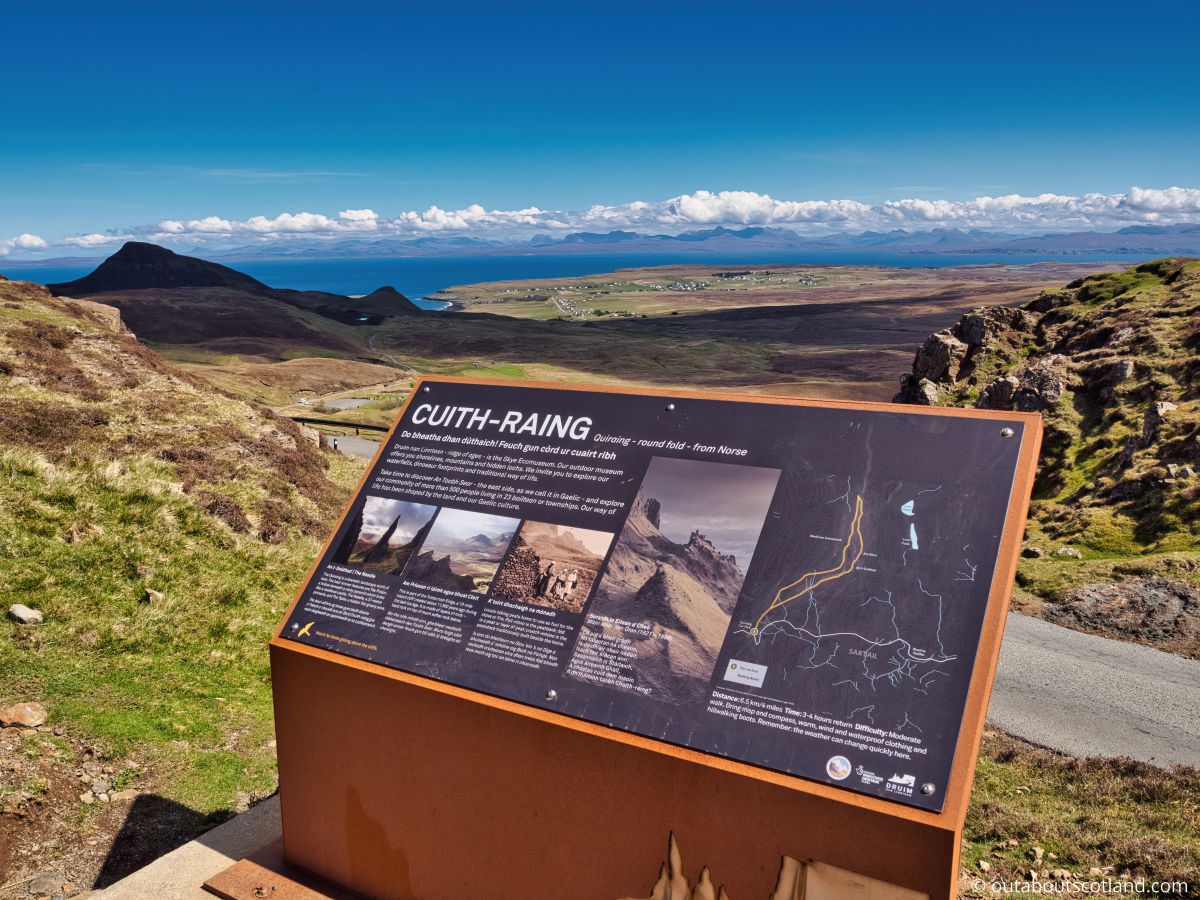
Things to Do Nearby
From Portree:
The Fairy Glen. Uig, IV51 9YG. 16 miles (23-minute drive).
The Fairy Glen is an otherworldly landscape that comprises a series of randomly placed conical hills that are ringed by zigzagging steps. Although they look like an artwork they are, in fact, the remnants of an ancient landslide, much like the Quiraing. Visiting the site offers tourists a fascinating walk that should take around one hour to complete.
The Fairy Pools. Glenbrittle, IV47 8TA. 20 miles (33-minute drive).
The Fairy Pools are one of Skye’s most famous landmarks. The attraction features a series of waterfalls and freshwater pools that run off the River Brittle at the foot of the Black Cuillins and they’re famous for the brilliant blue-green colour of the water when lit by sunlight.
The Quiraing. Portree, IV51 9LB. 20 miles (34-minute drive).
The Trotternish Ridge is a vast section of the northeastern corner of Skye that saw a number of monumental ancient landslides that carved the area into a series of rock spires and sheer cliffs. The most-visited part of the ridge is called the Quiraing, which visitors can walk through on a track that passes alongside a number of unusual rock formations.
The Old Man of Storr. Portree, IV51 9HX, 7 miles (14-minute drive).
The Old Man of Storr was also the result of a landslide, but it is just one rock outcrop as opposed to several. Tour buses frequently stop at the “Old Man” car park because it is close to Portree and is immediately off the A855. The walk from the lower car park to the rock takes around an hour, but it is possible to continue north into the Maell na Suirmach nature reserve.
Talisker Distillery. Carbost, IV47 8SR. 17 miles (25-minute drive).
Talisker is one of two Isle of Skye whisky distilleries (the other is Torabhaig) on the Isle of Skye. The distillery is set on the shores of Loch Harport close to the turn-off to the Fairy Pools, so visitors often combine both attractions in one trip. Visitors to Talisker Distillery can join guided tours that show the workings of a Scottish distillery, from the preparation of the grain to the final storage of the caskets in a bonded warehouse.
Frequently Asked Questions
Why is the Isle of Skye famous?
The Isle of Skye is famous for its landscapes which are widely regarded as the most beautiful in Scotland. Highlights include the Quiraing on the Trotternish Ridge as well as the Storr, the Fairy Glen, and the Fairy Pools.
Skye is also famous for its historic attractions including Armadale Castle and Dunvegan Castle, and natural wonders like the Kilt Rock waterfall and the dinosaur footprints on An Corran beach.
Is the Isle of Skye a must-visit?
The Isle of Skye is an absolute must for visitors on a tour of Scotland. Getting there is easy thanks to the Skye Bridge at Kyle of Lochalsh and the island can be accessed from Edinburgh or Glasgow in just 4 hours.
Tourists have a wide choice of attractions to visit and there are lots of activities to take part in, including hill walking in the Cuillin mountains, coastal walks, exploring castles, and visiting nearby Raasay.
How long does it take to drive around the Isle of Skye?
It will take around 3 hours to drive the A87 from the Skye Bridge to Sligachan, then to Portree and around the Trotternish peninsula. Driving the A851 along the Sleat peninsula takes one hour from the Skye Bridge, and driving from the Skye Bridge to Glendale on the northwest of the island takes 2 hours.
Is the Isle of Skye touristy?
The Isle of Skye is very touristy, and in fact it’s one of the busiest places in Scotland, especially in summer. Each year more than 600,000 tourists visit Skye, and some attractions like the Fairy Pools have to cope with upwards of 200,000 visitors annually.
What is the best month to visit the Isle of Skye?
The best time to visit the Isle of Skye depends on what you want to do and see while you’re there.
That being said, if you want to experience the island’s natural beauty you may prefer to visit in the summer (June to August) when the weather is generally mild and there are longer daylight hours. This is also the busiest time of year on the island so you will have to book accommodation several months in advance.
How many days do you need on the Isle of Skye?
The number of days on Skye depends on what you want to see and do. However, most visitors will be able to experience the majority of the best attractions and walking trails over 5-7 days.
Where is the Isle of Skye?
The Isle of Skye is an island located off the west coast of Scotland. It is the largest island in the Inner Hebrides, a group of islands that also includes the Isle of Mull, the Isle of Islay, and the Isle of Jura, among others. The island is accessible by ferry from Mallaig as well as by bridge from the Kyle of Lochalsh.

